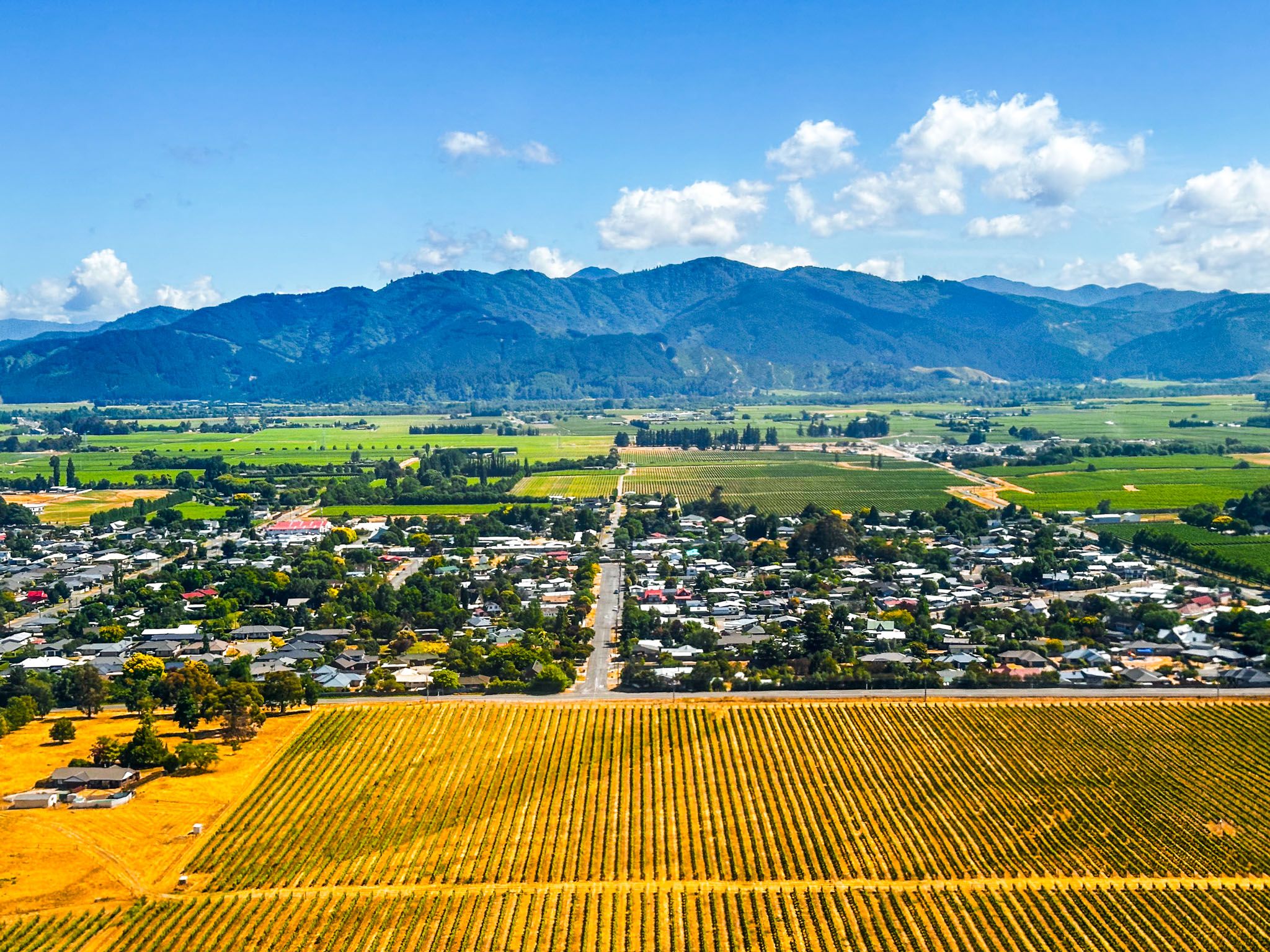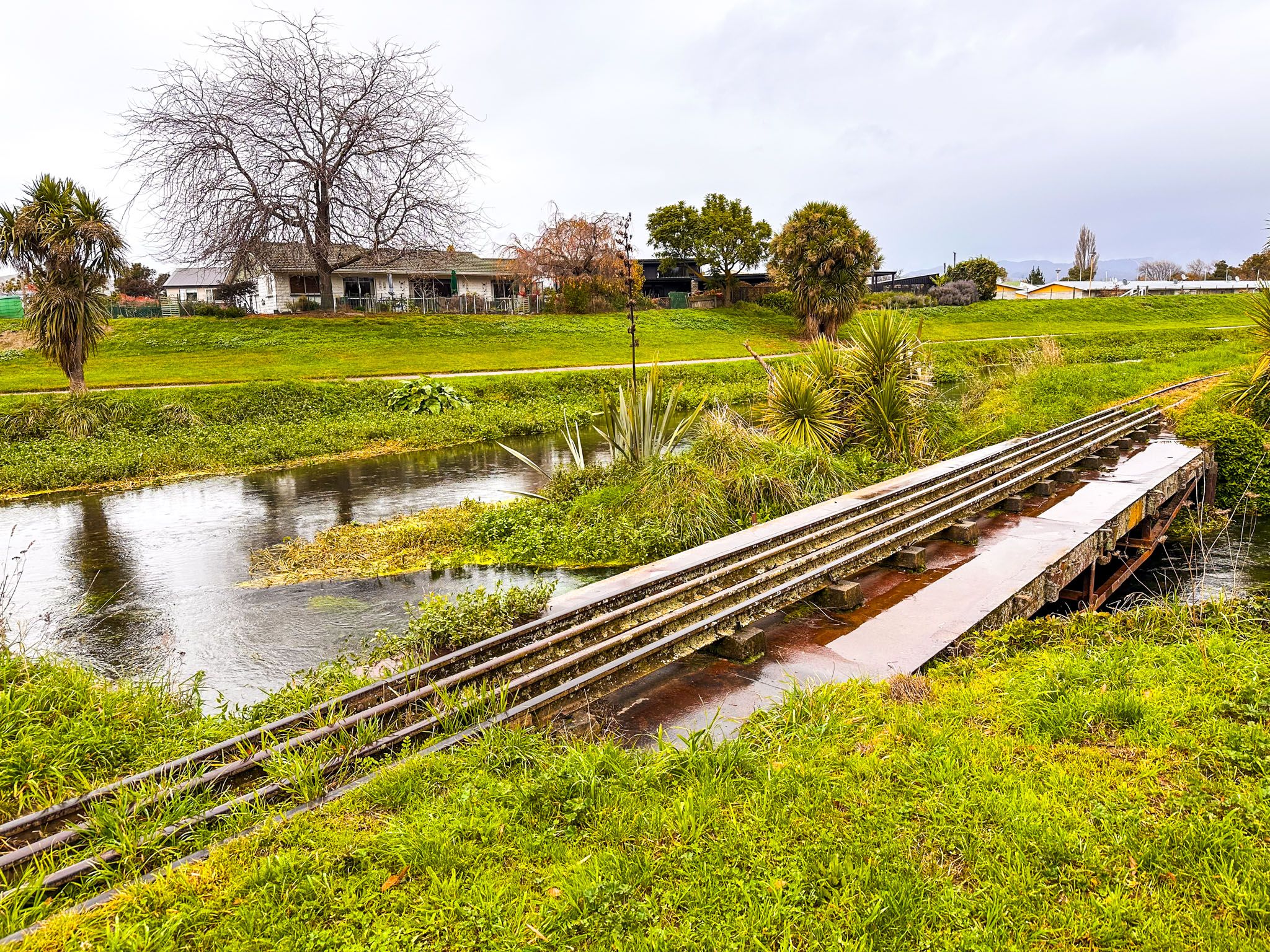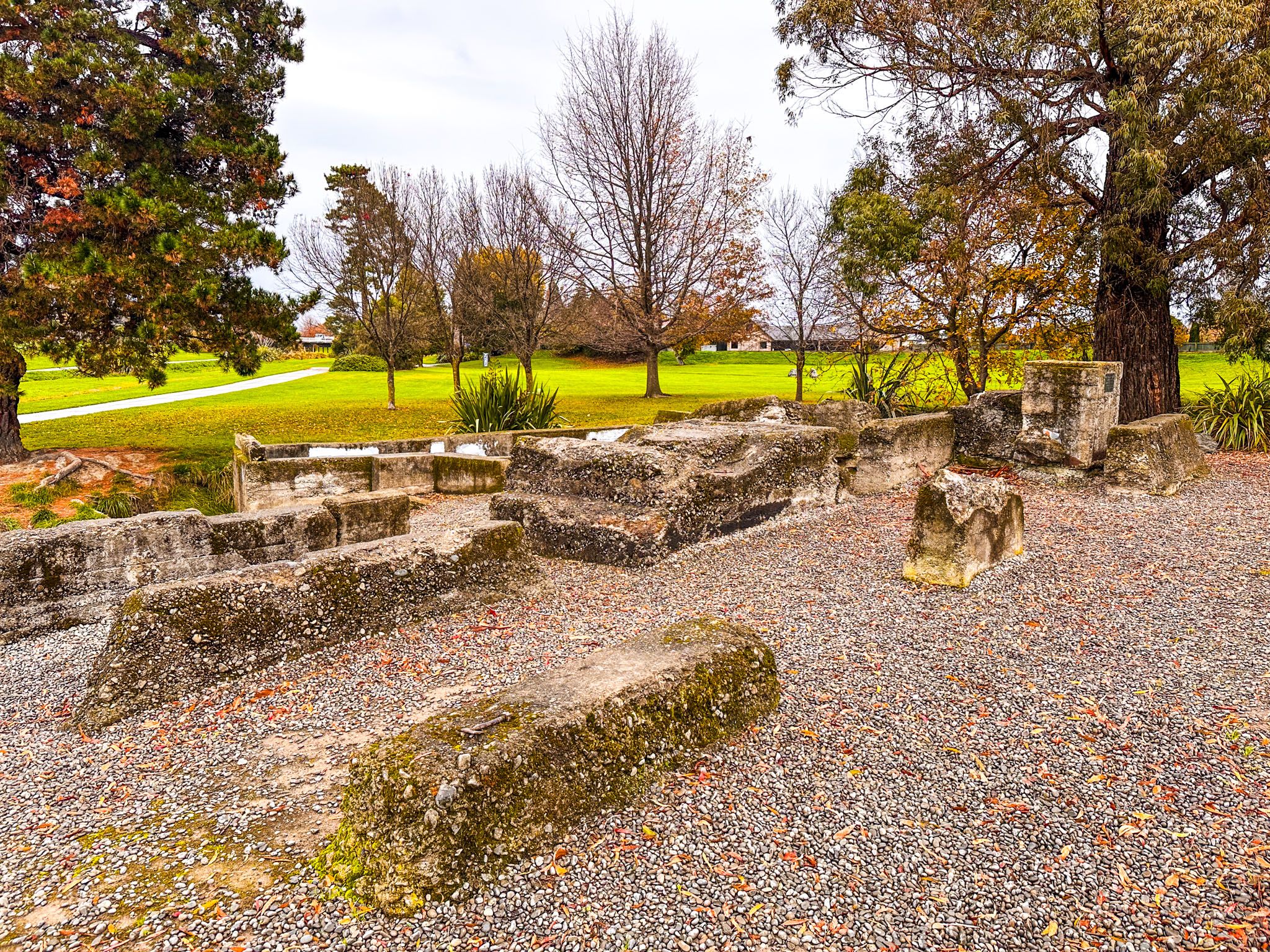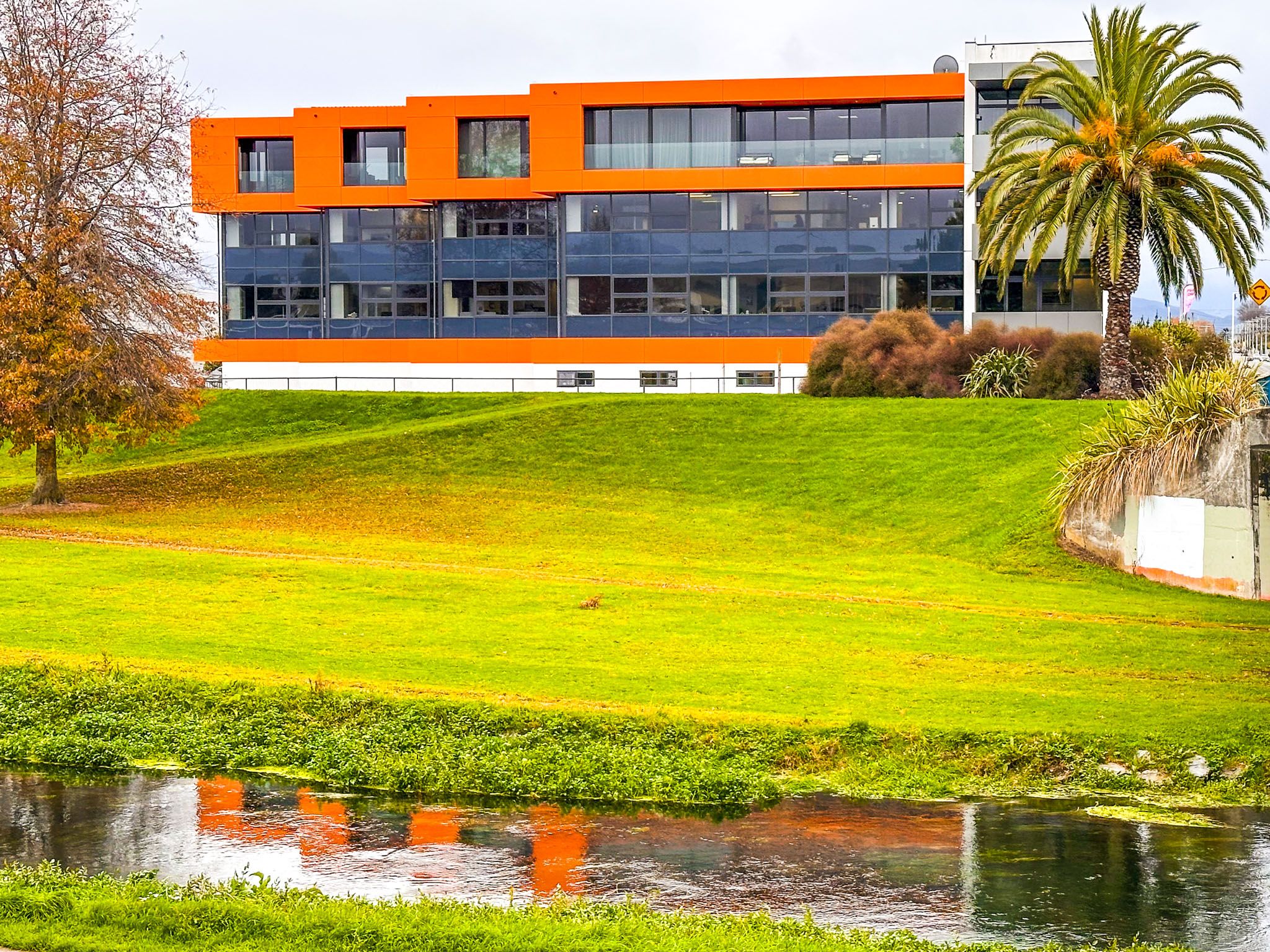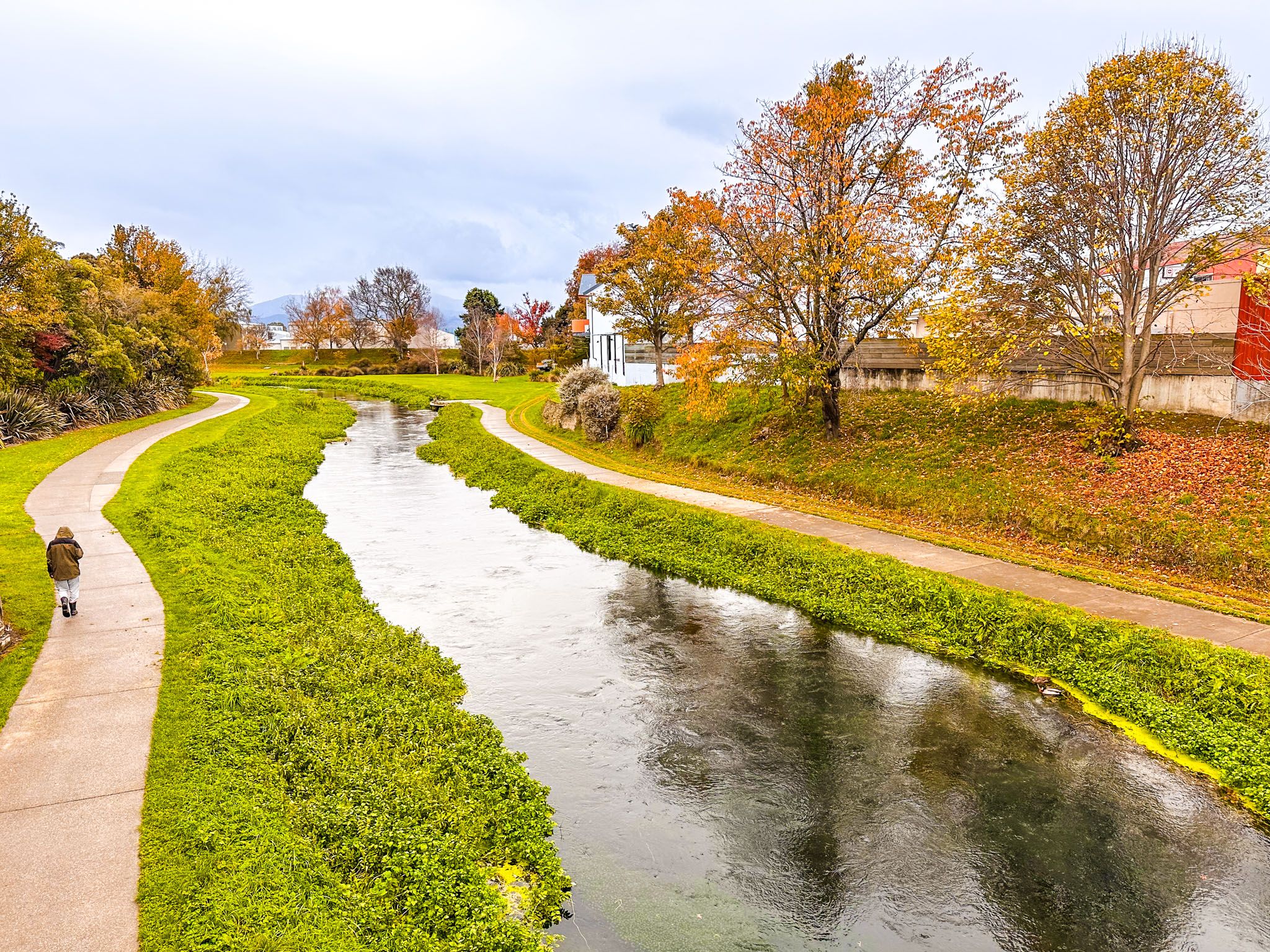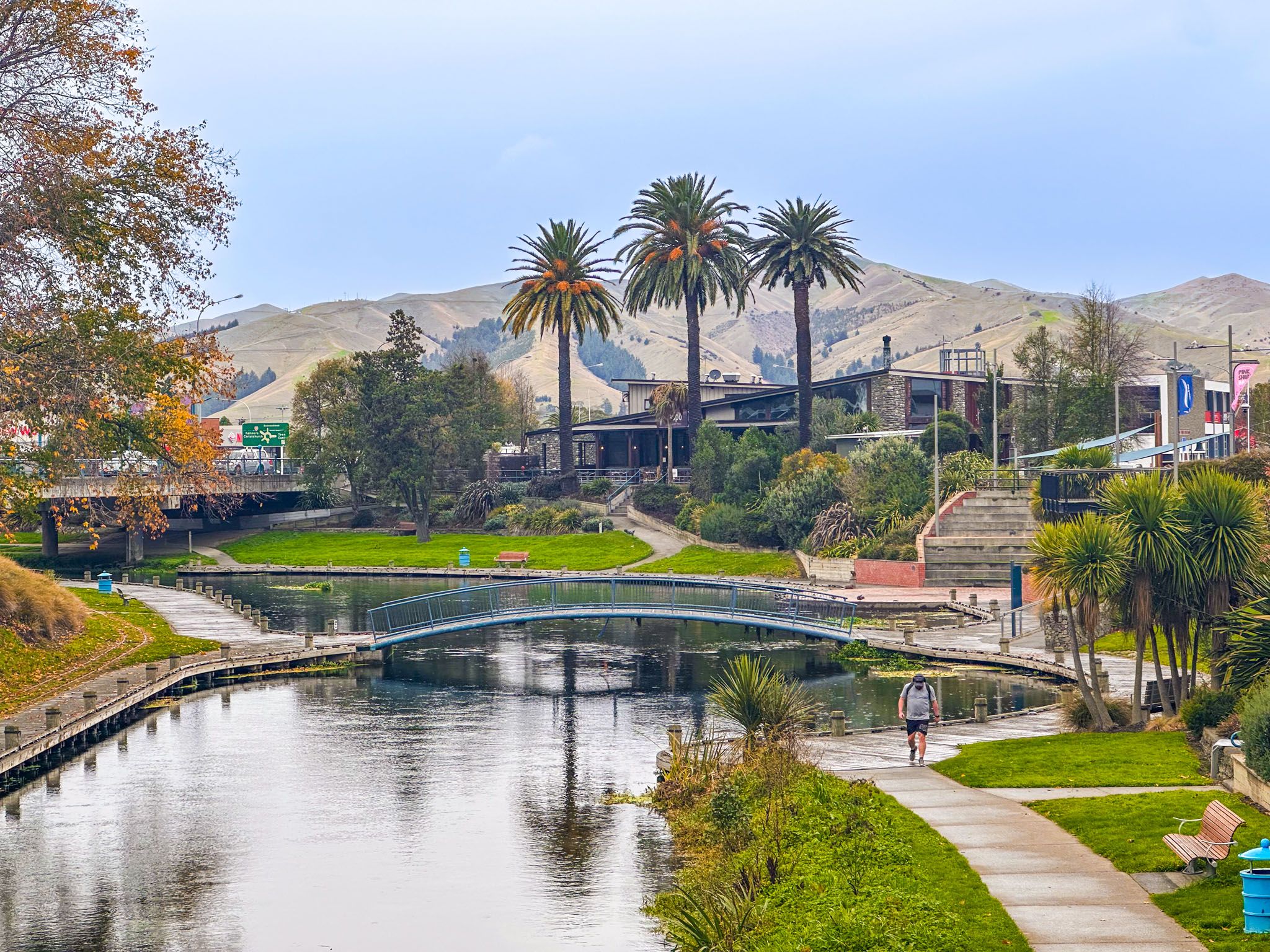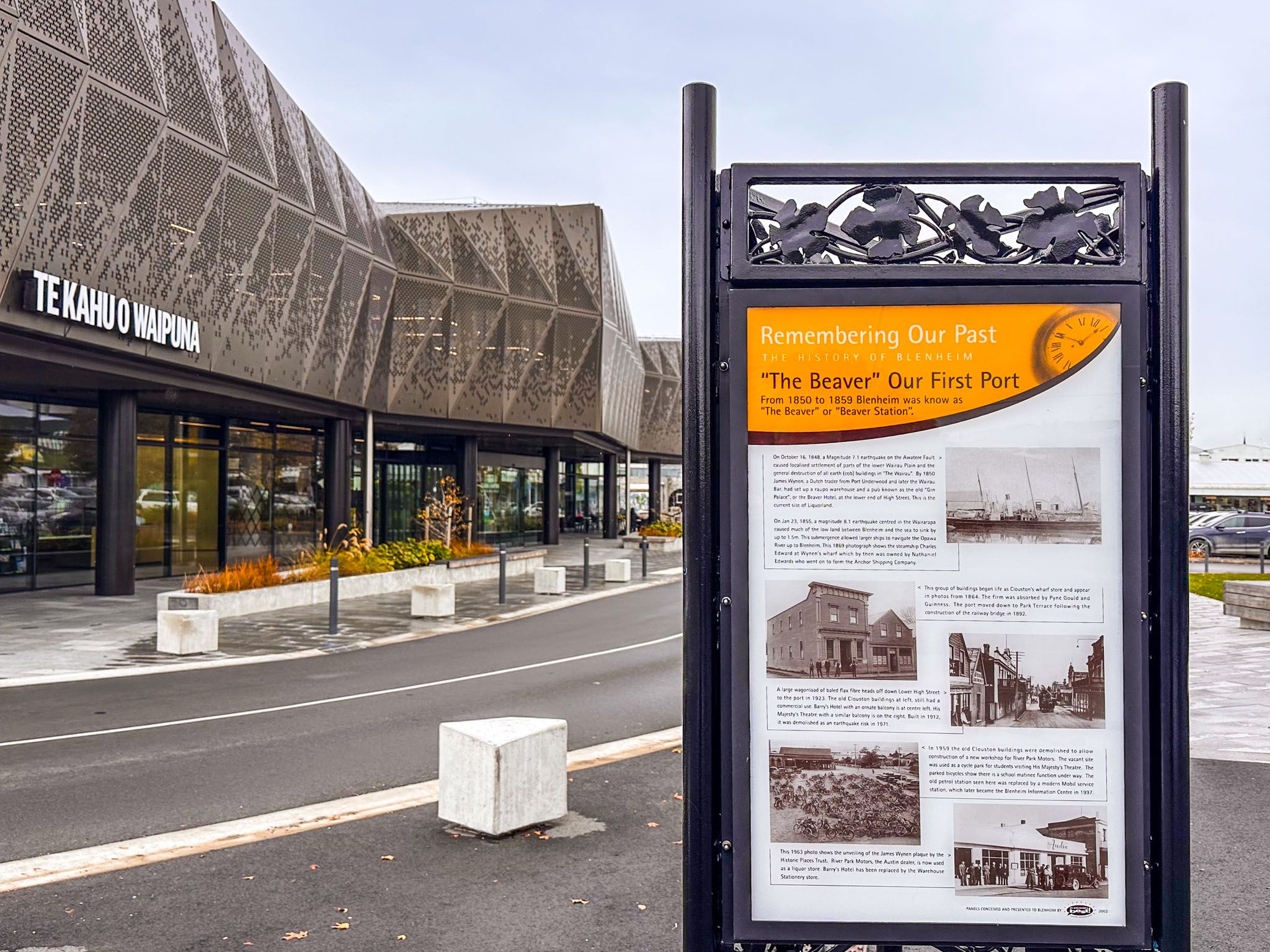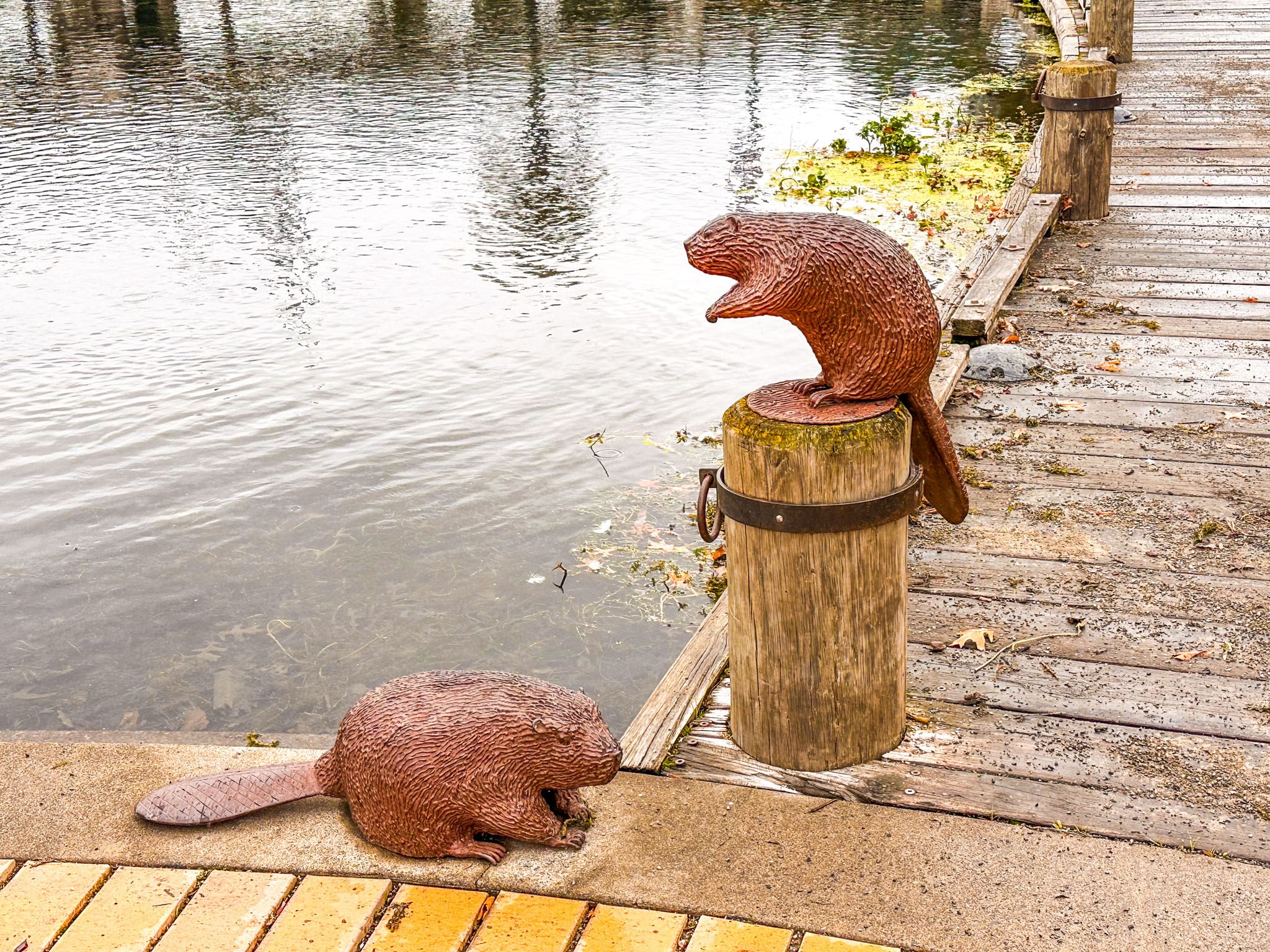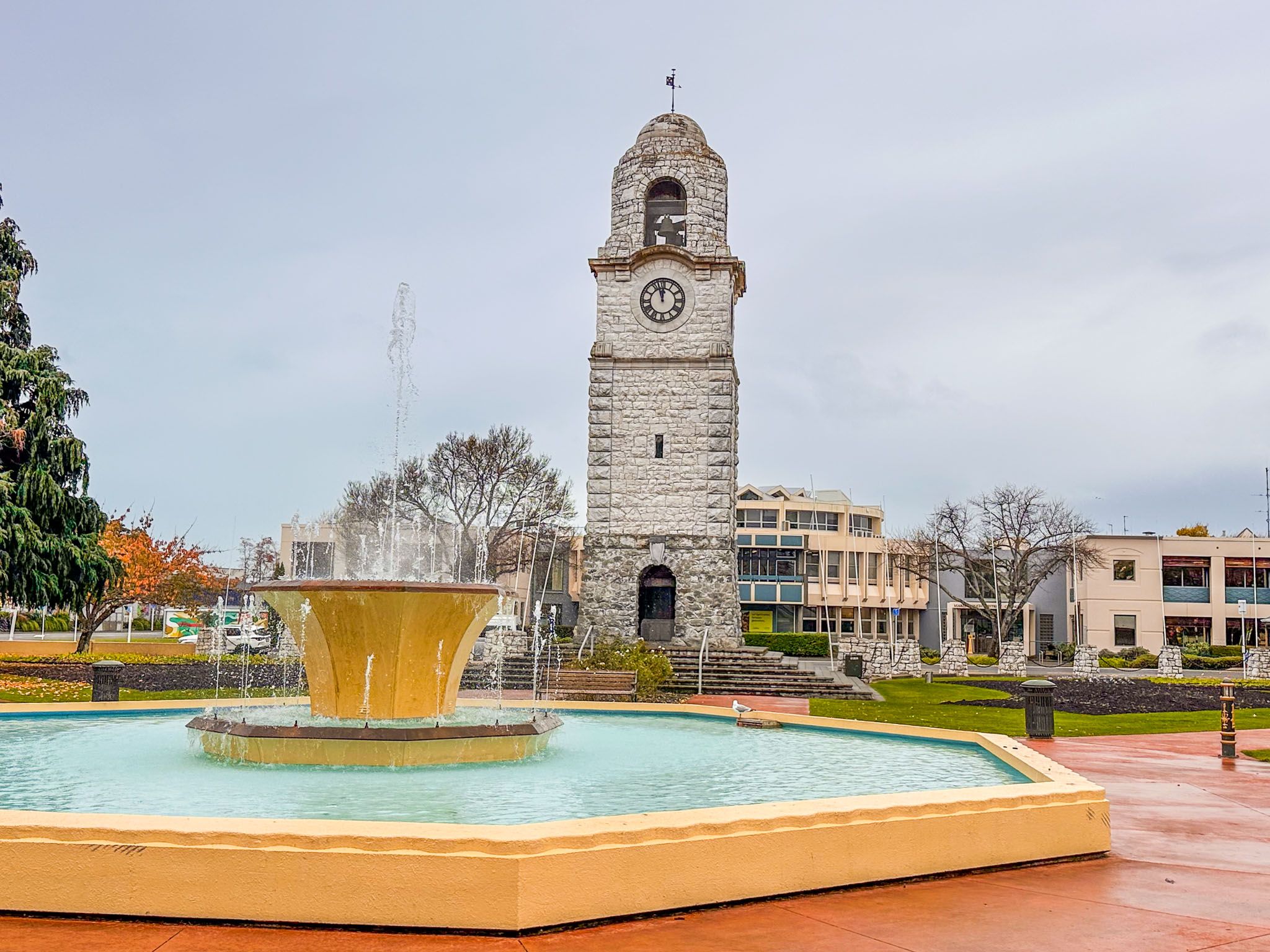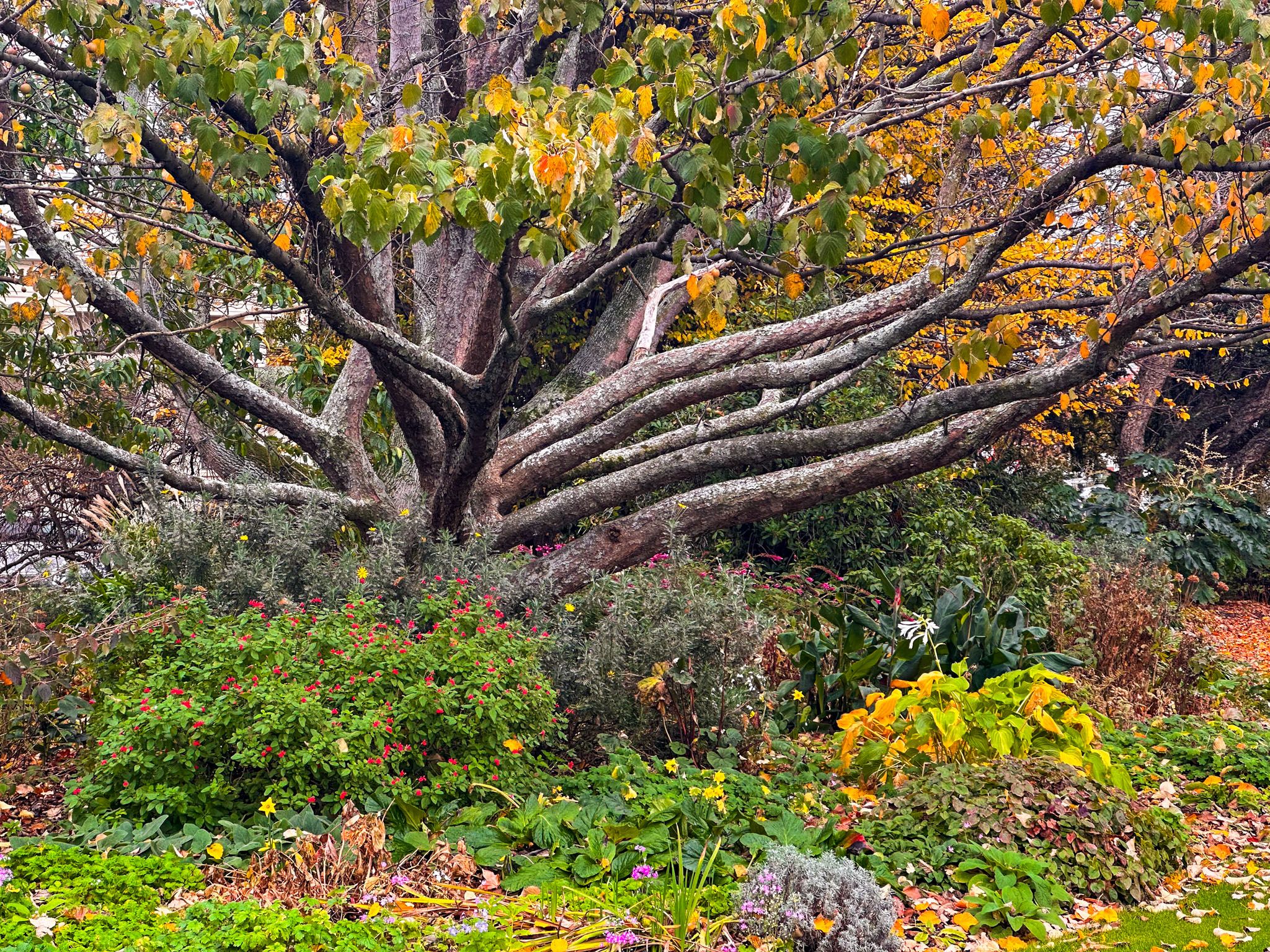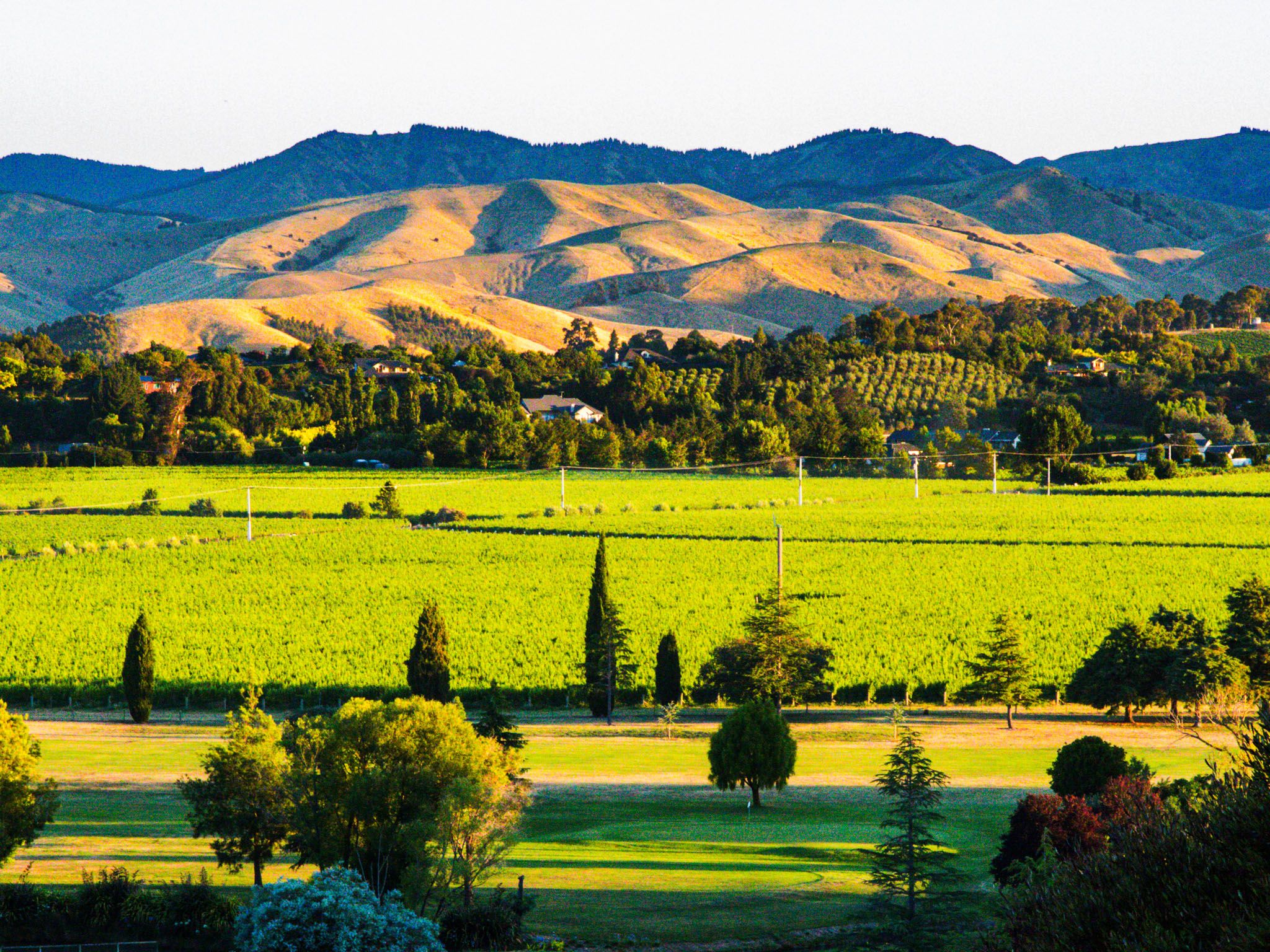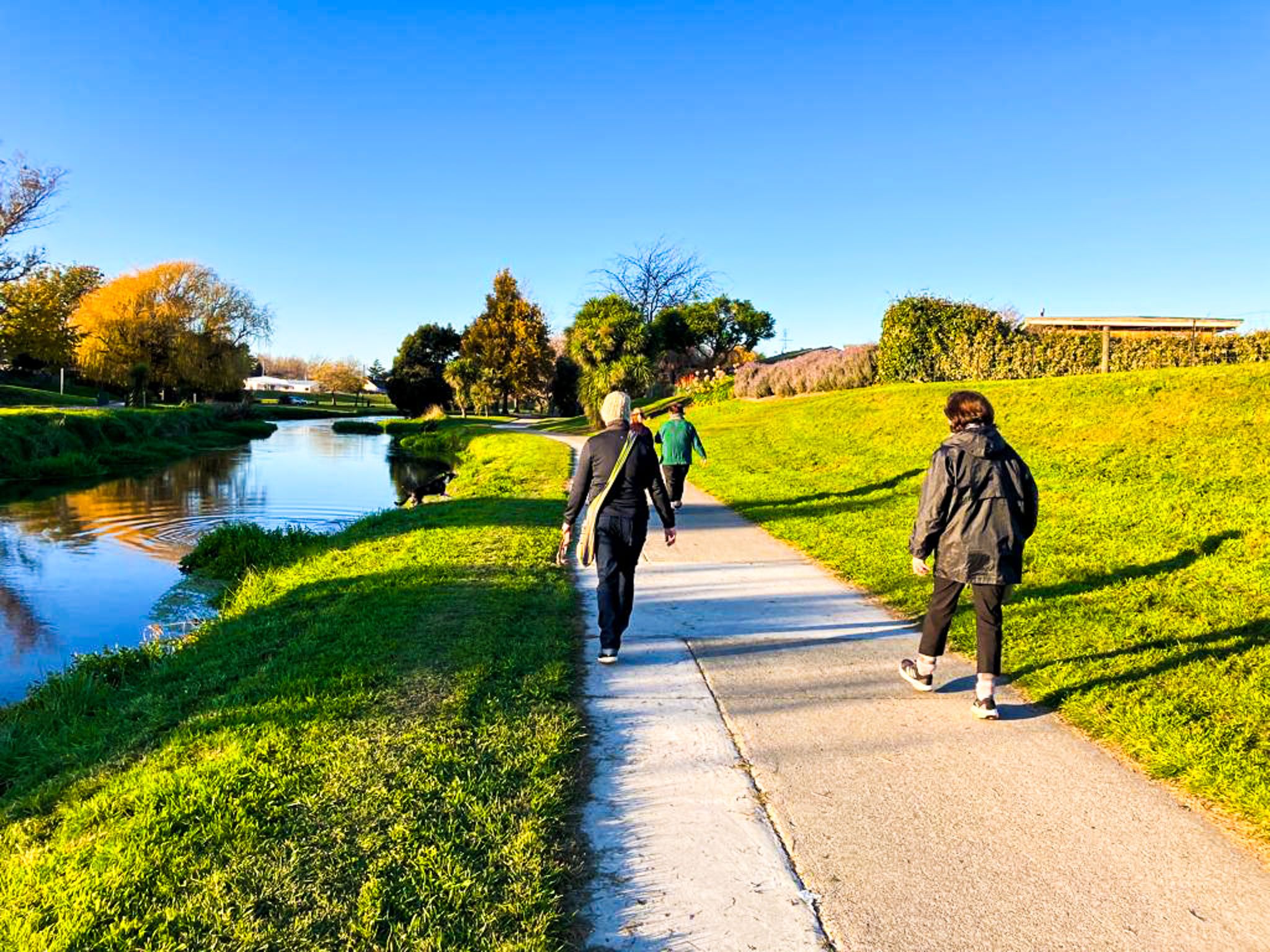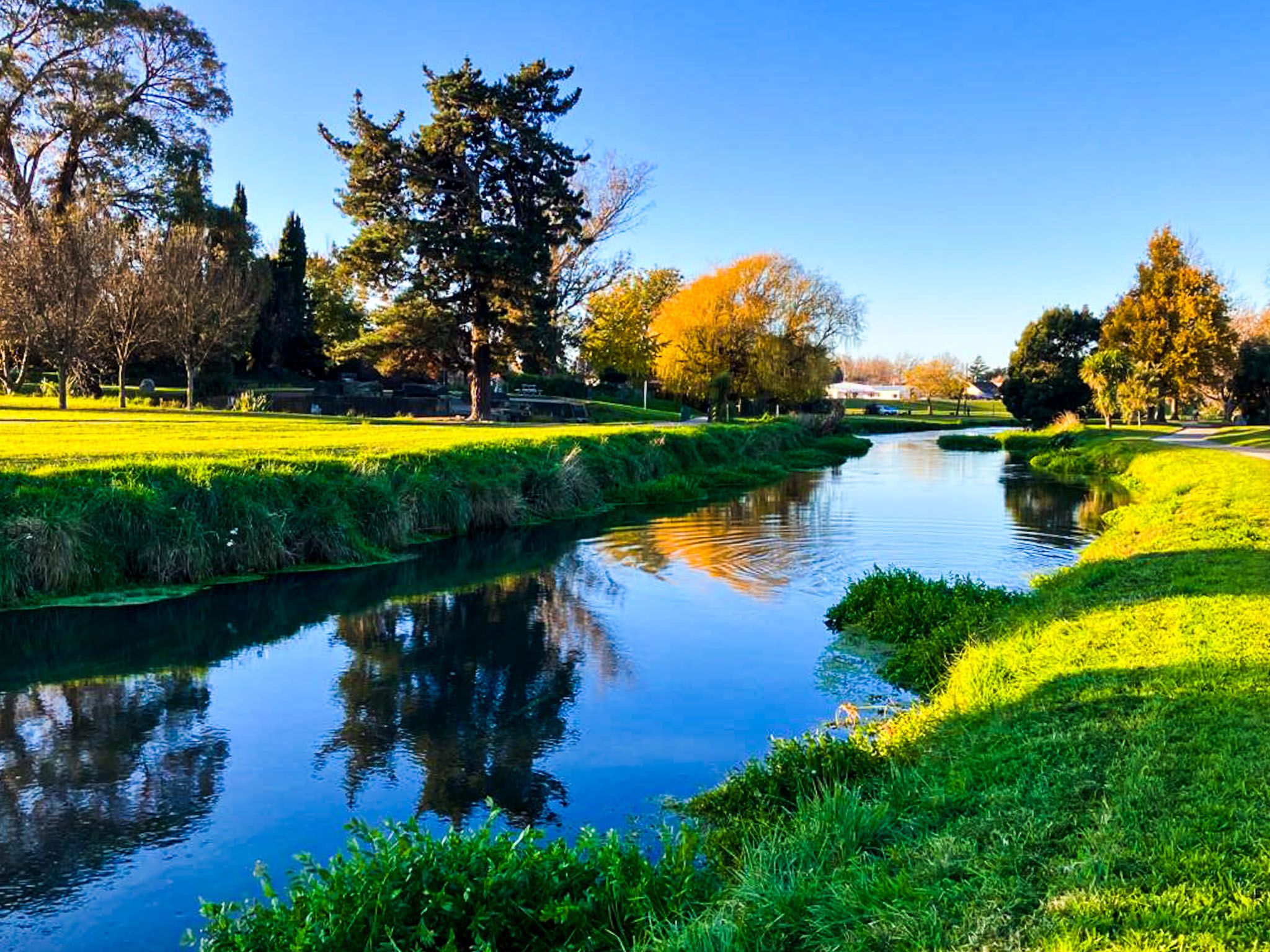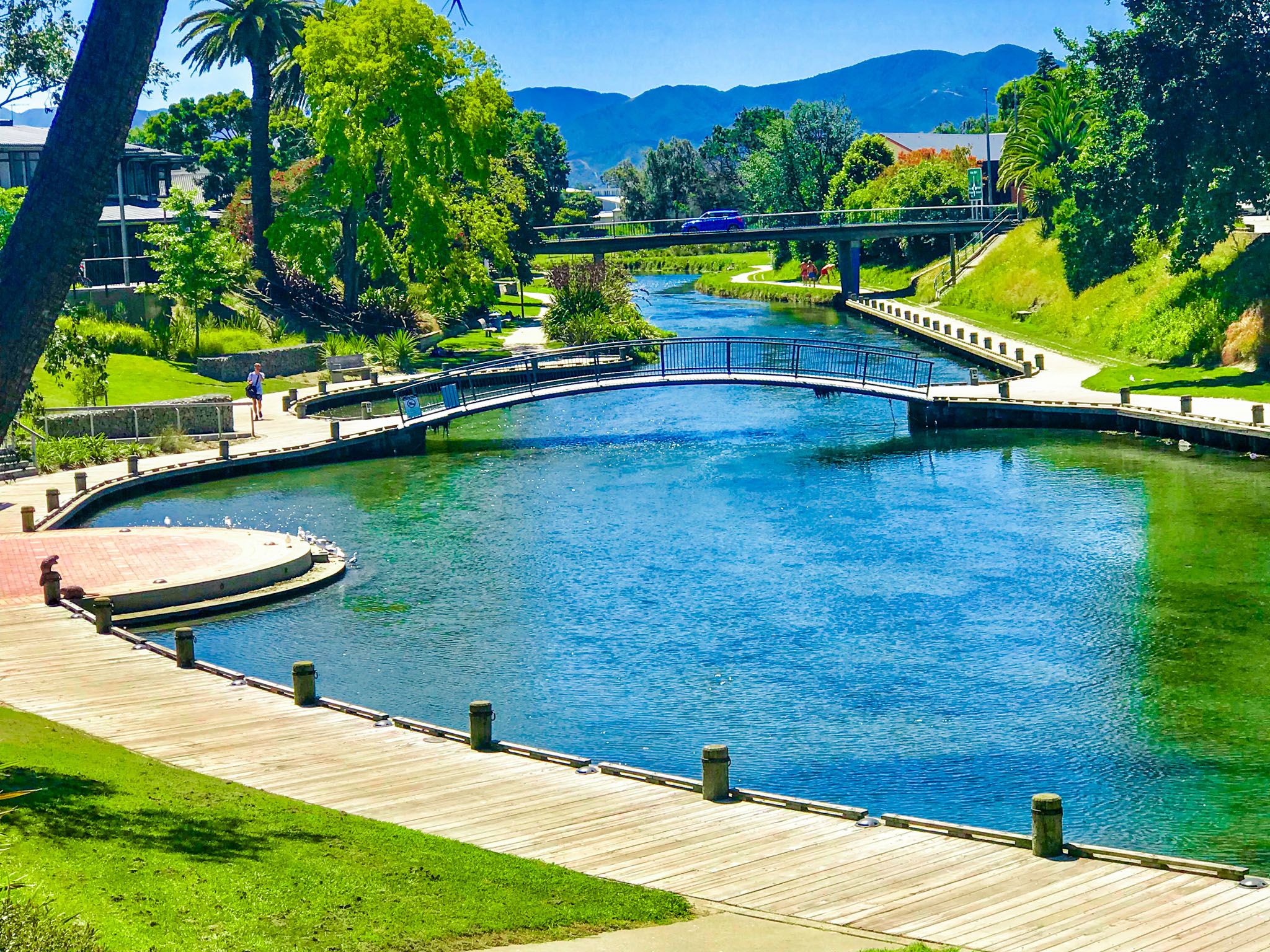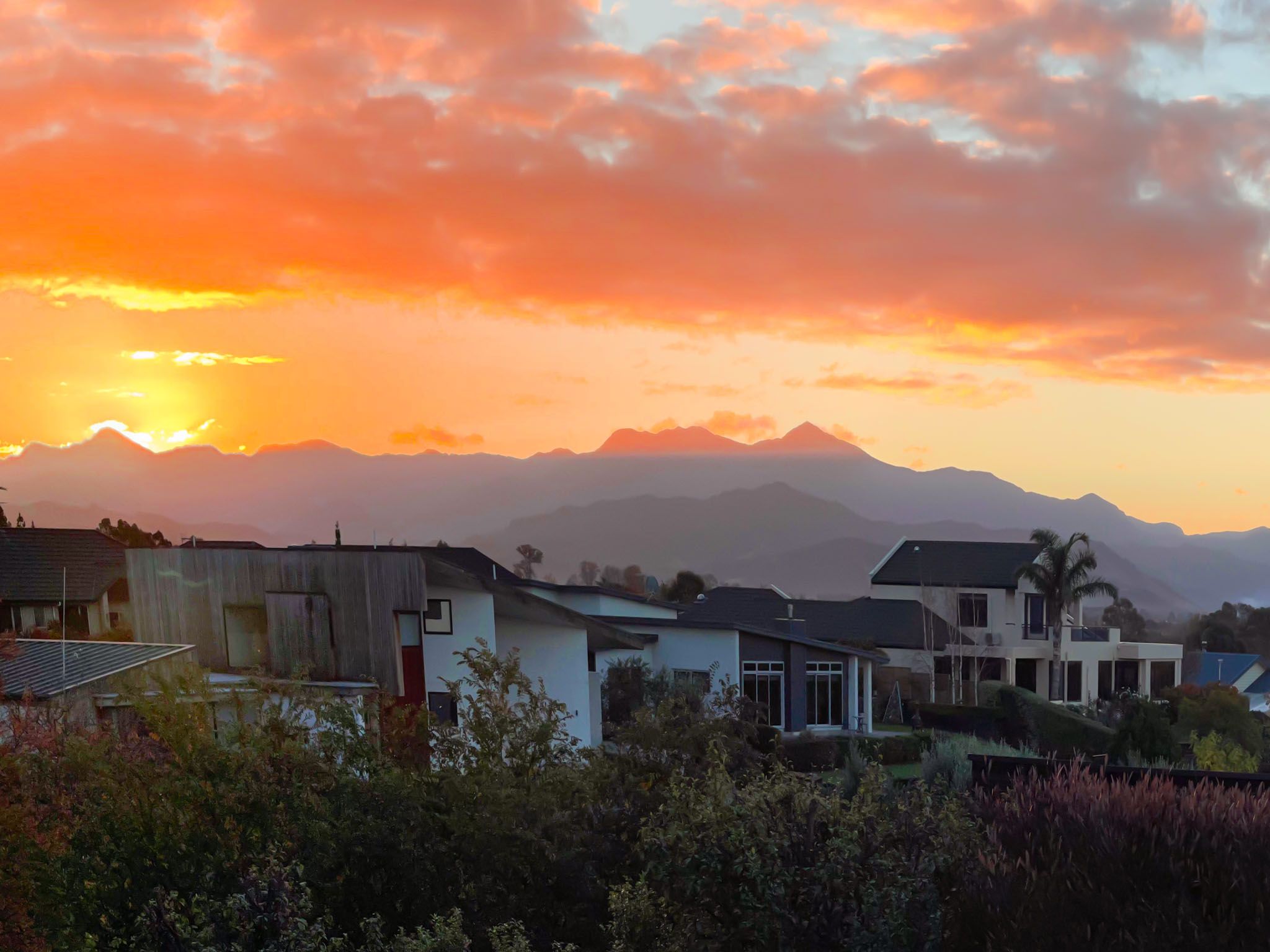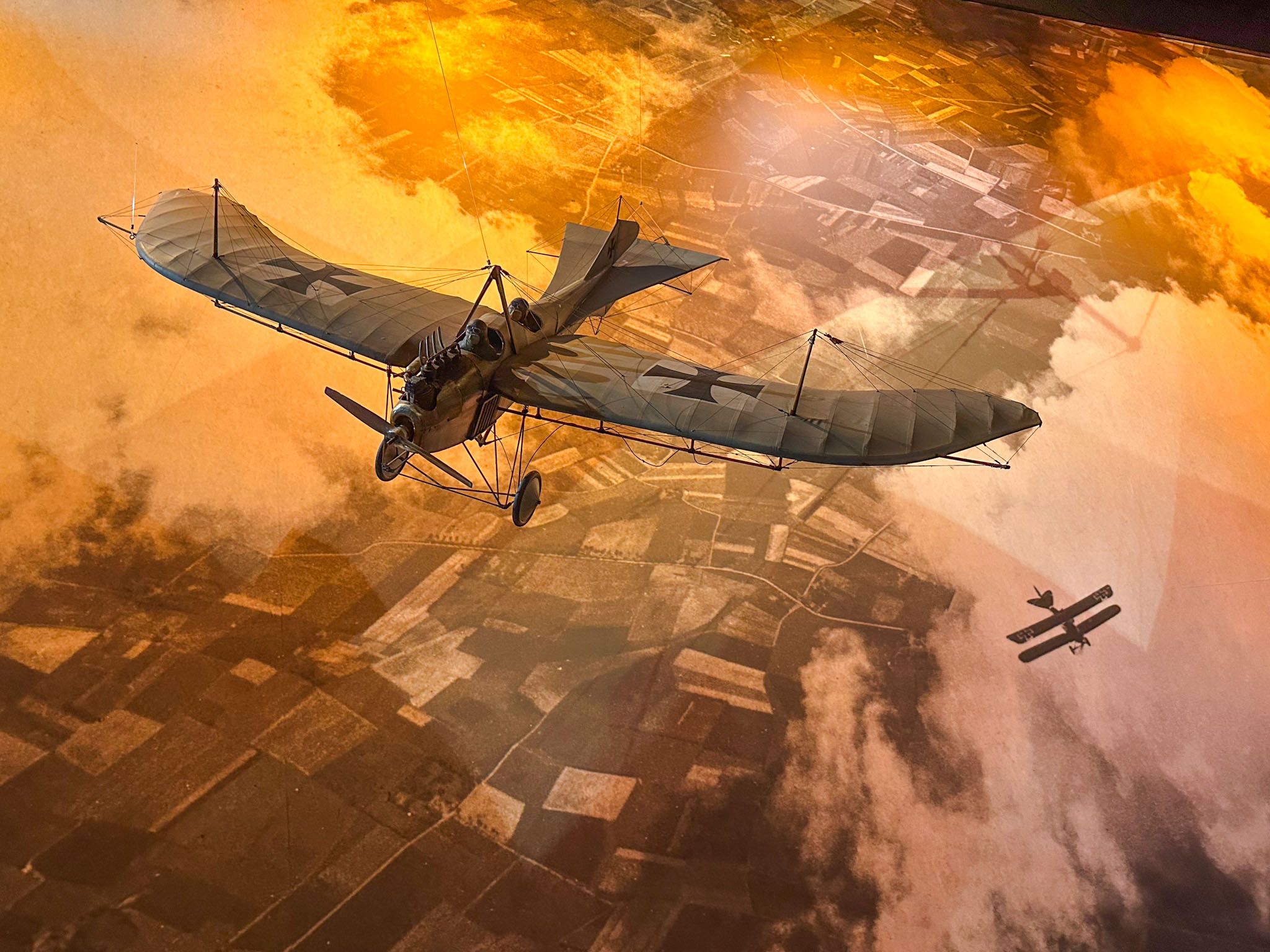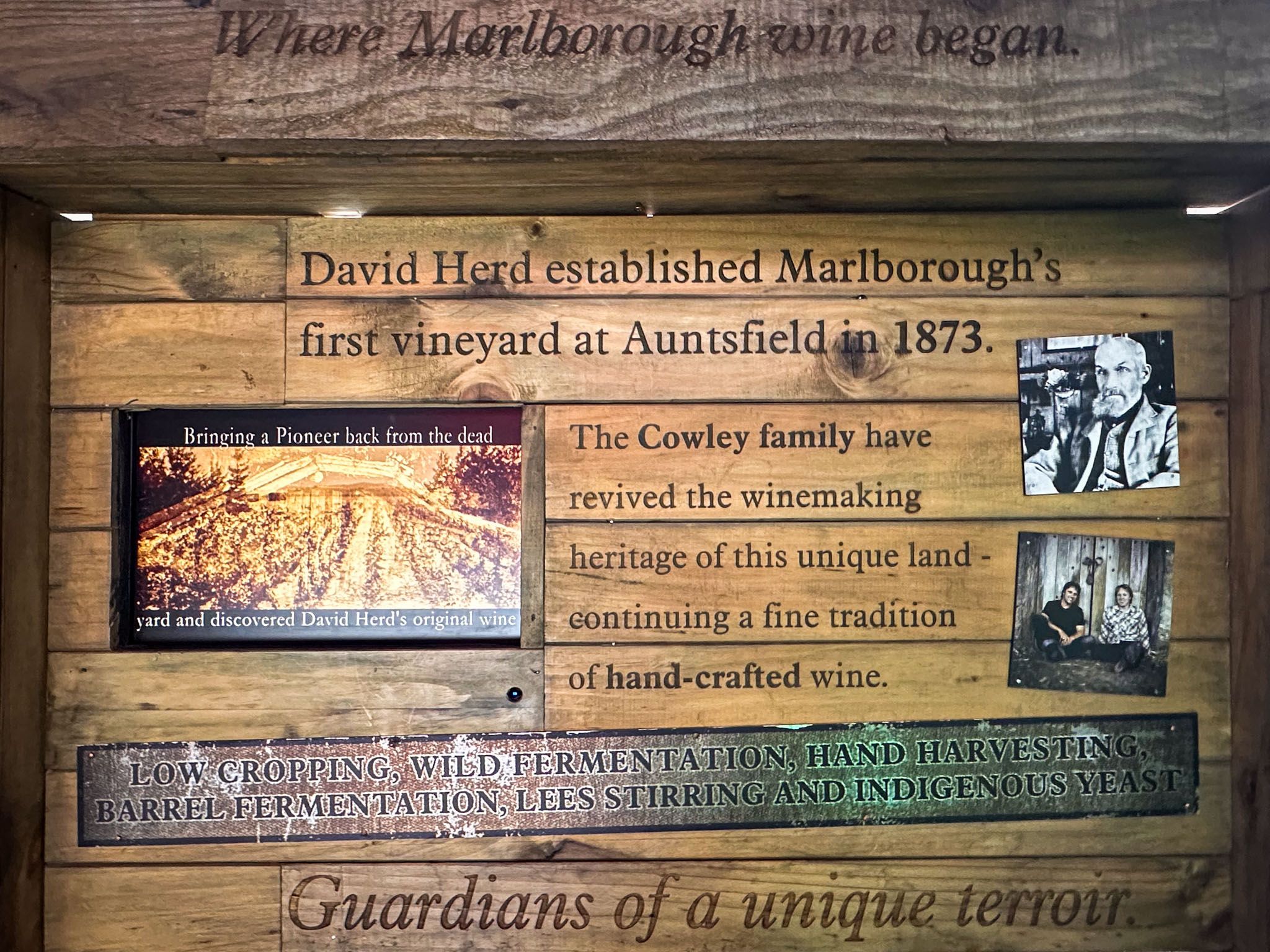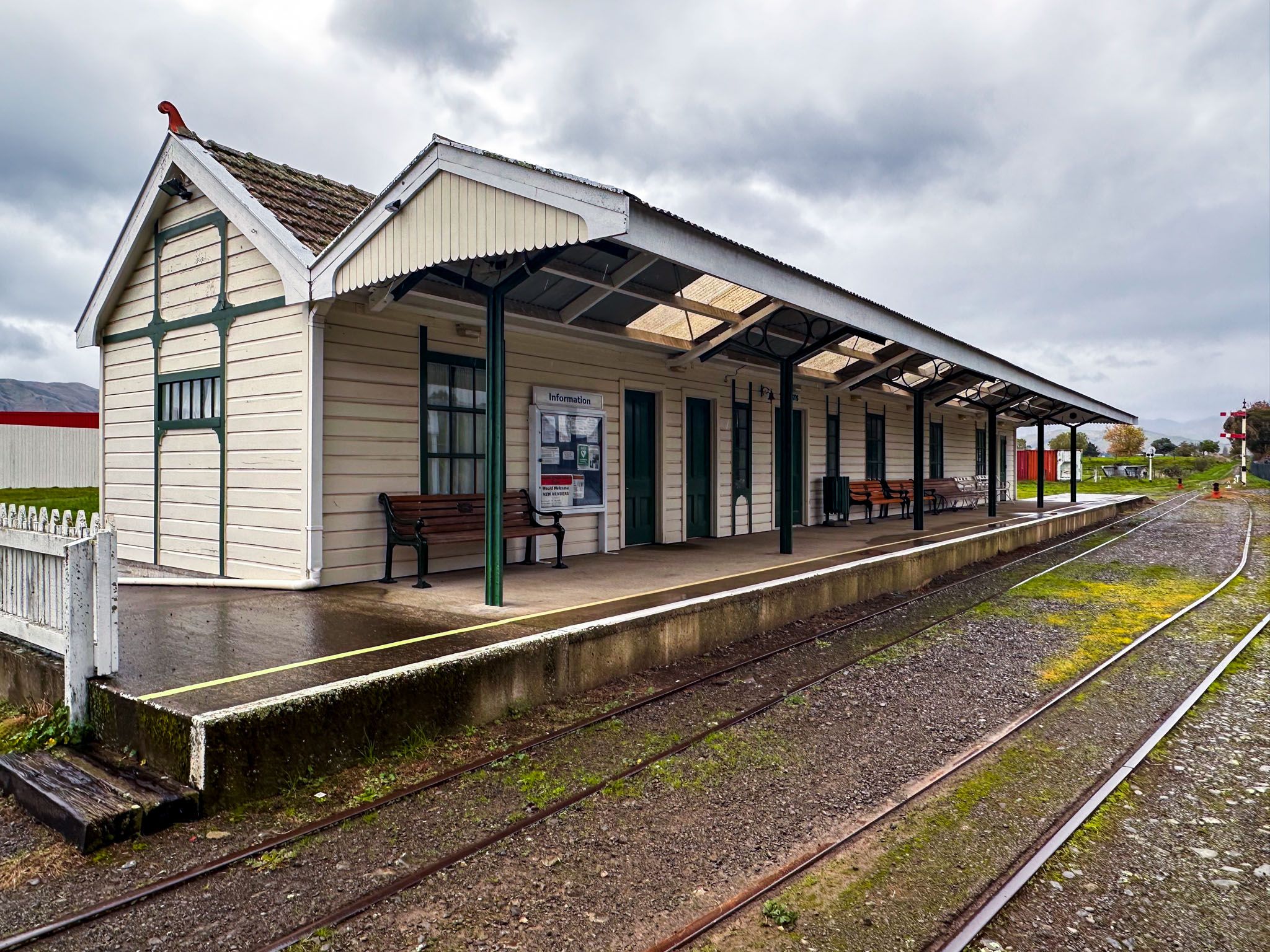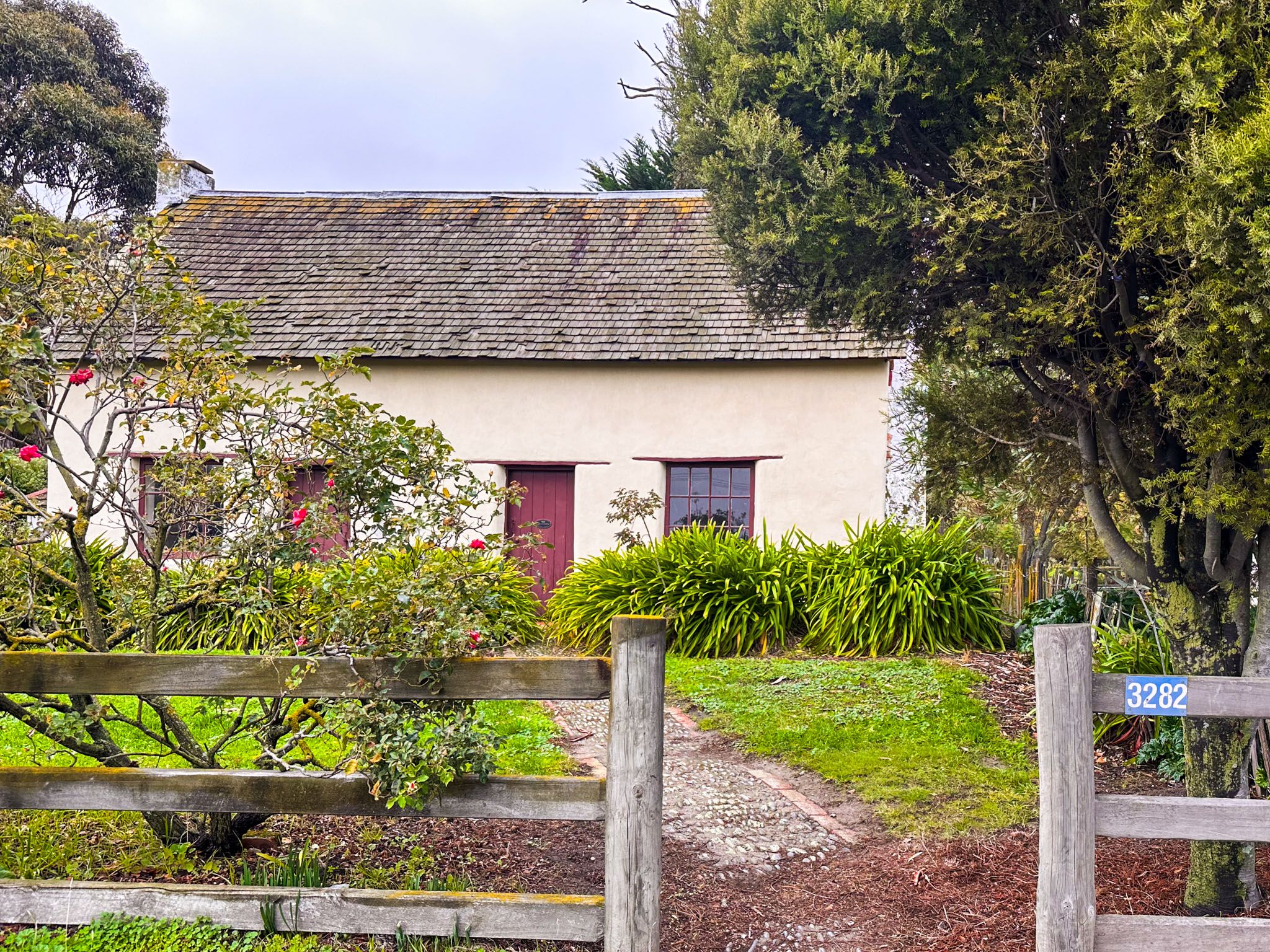Blenheim is the largest town in Marlborough, with 30,000 people, and is situated on the south side of the Wairau River and the Wairau Plain. The town has substantial accommodation, camping, food and other services for travellers. The Wither Hills are south of the town, the Richmond Range to the north, and the Marlborough Sounds are over the high, steep hills to the north-northeast. Known globally for the sauvignon blanc of the Wairau Valley, the town is the centre of the New Zealand wine industry. However, there are plenty of other attractions, with scenic road trips, walking and cycle tracks for all levels, and heritage sites.
European colonisation of the Wairau Valley began in the 1840s, and the town was well established by the 1850s on the confluence of the Taylor and Ōpaoa Rivers. The upside was easy access for boats from the coast when roads were inadequate; the downside was frequent flooding, which led to the town being called Beaver or Beavertown, to begin with. Pastoral development and drainage eventually resolved the flooding issues, while naming the town after a famous battle of 1704, won by the Duke of Marlborough, presumably improved its image with its mostly British settlers.
Start your exploration at Brayshaw Heritage Park, a short ride or walk from central Blenheim. This living museum precinct features several preserved historic buildings, including an early settler’s cottage, a colonial jail, and a historic railway station. The station is part of the Blenheim Riverside Railway, a volunteer-run miniature train that runs from Quays Riverside Park near the town centre, along the Taylor River to Brayshaw Park. It's a charming and inexpensive ride, particularly popular with families and railway fans. Brayshaw Park is also home to the Marlborough Museum, which focuses on the region’s winegrowing legacy and how it became the premier winemaking region in the country. The museum is open to the public on Sundays, Tuesdays, and Thursdays from 11:00 am to 3:00 pm.
You can also walk or cycle the Taylor River Trail. Like the railway, this scenic route starts at the Taylor Dam on Taylor Pass Road and follows the river to Quays Riverside Park and Brayshaw Park in central Blenheim. Towards the town end, keep an eye out for the ruins of an early water-driven flax mill set up by Philip Vercoe. Shortly after, you will pass the Events Centre and the gorgeous modern library next to Quays Riverside Park. Several interpretive panels outside the public library share stories from the town’s past, and be sure to spot the beaver statues! In front of the library, note the memorial plaque that records the establishment of the first store in Blenheim in 1850 by John Wynin.
From the library, it is also a short walk to the town's retail centre or Seymour Square. The square is a beautiful urban green space that features the War Memorial Clock Tower, a floral garden, and a popular fountain display. It’s a peaceful place for a picnic or a break between activities.
Another special feature of Blenheim is the Omaka Aviation Heritage Centre. The centre has superb aircraft displays and exhibitions crafted by Wētā Workshop. While this isn’t a free attraction, it’s a must for aviation enthusiasts or fans of Peter Jackson’s cinematic storytelling. There are two sections covering aircraft and related history from WW1 and WW2. In addition to the rare planes, many exhibits use life-size, realistic models or theatrical effects to bring history to life. The Red Baron display and the cinematic immersion into the Battle of Stalingrad are highlights.
To complete the historical immersion, just south of town on State Highway 1, you’ll find the Riverlands Cobb Cottage, one of the few surviving examples of an early settler building style in Marlborough. Built from a mixture of clay, straw, and tussock grass, it’s a humble relic of settler life.
Heading further afield, south of Blenheim lies the Wither Hills Farm Park, a network of loop trails with views stretching over the town and Wairau Plain, from Te Koko-o-Kupe / Cloudy Bay to the Richmond Range. The open grassland and regenerating bush offer a classic Marlborough landscape. There are multiple track entrances from Taylor Pass Road or the nearby Taylor River Trail. The popular Mt Vernon Track starts a bit further to the east from Redwood Street and climbs almost 400 metres to 422 metres, the high point on the hills. Overall, the trails range from short 30-minute loops to several-hour hikes, making them accessible for most walkers. There are also cycling options.
To the north of Blenheim, the Richmond Range rises sharply from the valley, forming a natural boundary between Marlborough and Nelson. The range is home to remote tramping routes and forested valleys. These can be accessed from nearby entry points that are typically within an hour’s drive of town. Examples of shorter walks include Omanalutu Reserve and Lake Chalice, with other multi-day hikes providing rugged, remote mountain experiences.
East of Blenheim, day trips to the Marlborough Sounds are also feasible. Port Underwood Road is a very scenic drive with Rārangi Beach and Whites Bay along the way. Picton is only thirty minutes away, offering access to Queen Charlotte Sound, various walking tracks, and the relatively remote bays along Queen Charlotte Drive. You can also get to St Arnaud, the gateway to Nelson Lakes National Park, in around 90 minutes. Alternatively, explore the Wairau Lagoons (15 15-minute drive) or Lake Grassmere, Marfells Beach, Cape Campbell and Ward Beach to the east on State Highway 1, all less than an hour away.
Blenheim is located at the northern end of the South Island, about 30 minutes by car from the ferry terminal in Picton or a 4.5-hour drive from Christchurch via Kaikōura. You can also fly into Blenheim Airport from major centres like Wellington, Auckland or Christchurch. Once you arrive, most attractions within the town are within walking or cycling distance. The broader region is easily accessible by car.
